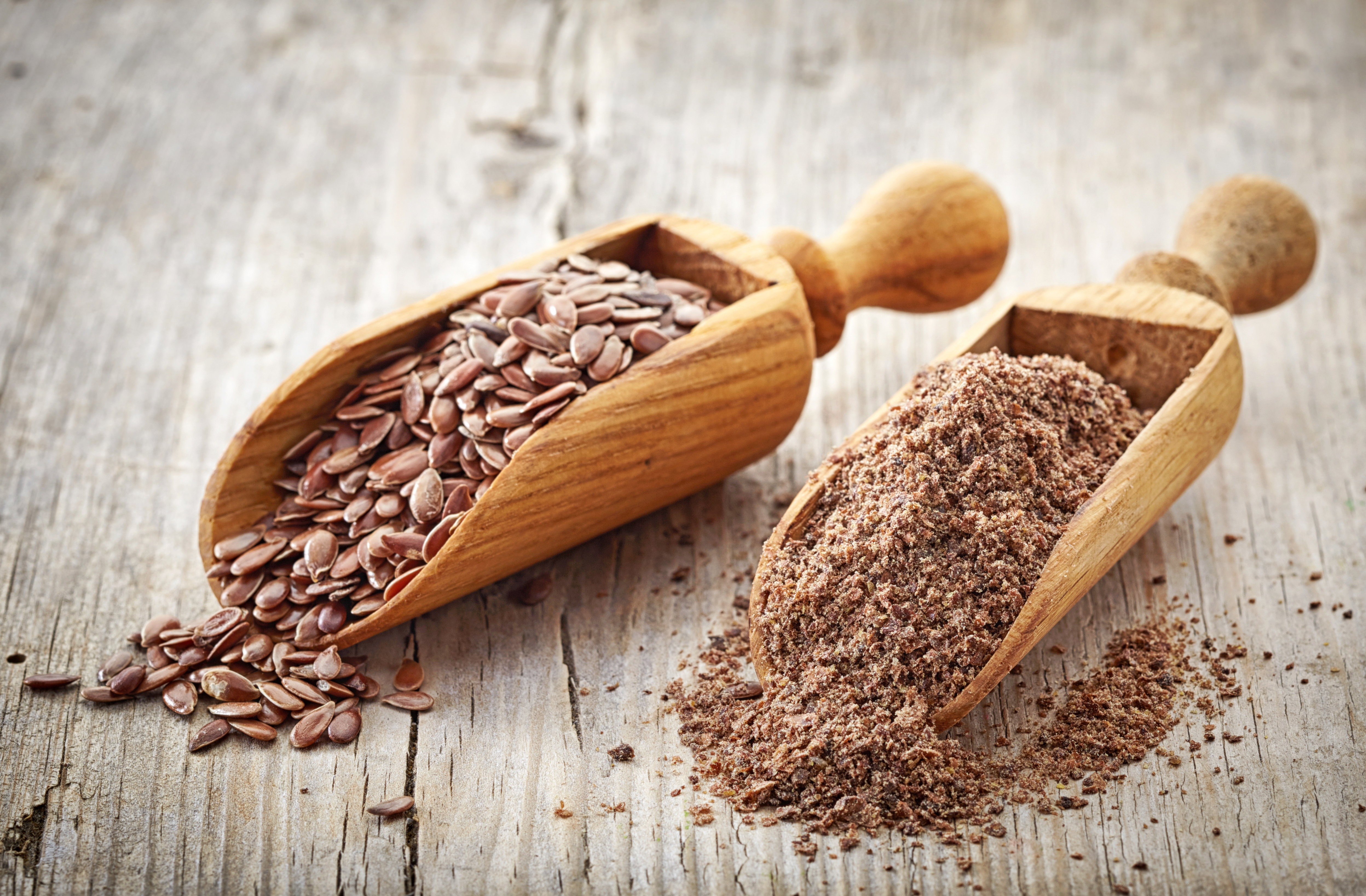Flaxseed Supplementation, Walking, and Hypertension

Hypertension is a chronic condition that can lead to cardiovascular disease or stroke, if not treated properly. As we age (mainly after 40 years), our rate of hypertension will go up. However, engaging in regular physical activity and adopting a healthy diet can help. These non-pharmaceutical strategies are strongly recommended for people at the prehypertension stage, or those with hypertension, to reduce the occurrence of even more adverse cardiovascular diseases, such as heart attack.
The American Heart Association and the American College of Sports Medicine recommend at least 30 minutes per day, 5 days a week, of moderate-intensity aerobic exercise to reduce blood pressure (Kokkinos, 2008). Those with prehypertension (120/80 – 139/89) and stage I hypertension (140/90 – 159/99) might not necessarily be using the blood pressure lowering medication. These stages of hypertension can actually be managed by modifying lifestyles, such as engaging in regular exercise and healthy diet habits.
Benefits of Flaxseed Supplementation
There are several lines of evidence demonstrating that flaxseed lignan supplementation can effectively reduce blood pressure and favorably improve blood lipids (Cornish et al. 2009). Furthermore, there is evidence suggesting that flaxseed supplementation can reduce blood glucose and play a role in protecting against some cancers. Secoisolariciresinol diglucoside (SDG) is an antioxidant phytoestrogen and predominant lignan present in flaxseed. As of now, the effective dose of SDG appears to be approximately 600 mg/d with no side effects (Cornish et al. 2009; Billinsky et al., 2013). SDG has a vasodilation effect through the L-arginine-nitric oxide pathway, which can induce dilation in the blood vessel and subsequently lead to a reduction in blood pressure. Flaxseed also contains omega-3 fatty acids and alpha-linolenic acid (ALA). In addition, it is high in total fiber. These factors all have anti-hypertensive actions.
Related Article: Precision Nutrition and You: Nutrigenomic Approaches To Disease And Health
Pan et al. 2007 reported that glycemic control was improved after twelve weeks of flaxseed lignan complex supplementation, while there was no significant effect on blood lipids in type 2 diabetic patients. In contrast, eight weeks of flaxseed lignan supplementation reduced blood lipid profile (LDL, vLDL, and total cholesterol), and glucose in participants with elevated cholesterol (Zhang et al. 2007). Cornish et al. 2009 revealed that a six-month walking program combined with flaxseed supplementation lowered diastolic blood pressure (DBP) in men as well as a reduction in DBP in both men and women with metabolic syndrome.

Walking Exercise Combined with Flaxseed Supplementation for Older Adults with Hypertension
There has been a major limitation of single time-point blood pressure measurement. It is a phenomena known as “white coat hypertension” (Boggia et al., 2014). This is common in older adults and can cause misdiagnosis of hypertension. Therefore, researchers and clinicians can significantly increase the accuracy of their data by using a 24-hour ambulatory blood pressure monitor.
The purpose of this study was to investigate the effects of 8-weeks of flaxseed lignan complex supplementation alone, or combined with a walking exercise program, on changes in blood pressure in older adults with high to normal blood pressure (120/80 – 139/89) or stage I hypertension (140/90 – 159/99). Participants included twenty-five adults over 50 years old with high-normal blood pressure or stage I hypertension, who were not taking any BP lowering agents.
Participants were randomly assigned to 4 different experimental conditions: a flax lignan + flexibility (exercise placebo) group, a flax lignan + walking group (30 minutes per day, 5 days a week of moderate-intensity aerobic), a placebo + walking group, and a placebo + flexibility group. Stretching and whey protein (64% protein) were used as the exercise and nutritional placebos, respectively. 24-hour blood pressure changes were monitored using an ambulatory blood pressure monitoring system at baseline and week 8. The AMBP monitoring system measured daytime blood pressure every 20 minutes, and sleeping time blood pressure every 45 minutes, for 24 hours. Total cholesterol, triglyceride, high-density lipoprotein (HDL) and low-density lipoprotein (LDL) were measured at baseline and after the intervention.
Related Article: A Short Workout Might Be All You Need
Study Results
Results showed that there were no significant differences in 24-hour ambulatory blood pressure and blood lipid profiles (total triglyceride, cholesterol, HDL, and LDL level) between groups. Walking exercise significantly reduced participants’ waist circumferences, but no other significant main effect was found.
Studies targeting healthy populations have also shown mixed results in cardiovascular risk factors. Interestingly, whey protein and stretching exercises have shown a positive change in some of the variables in this study. Whey protein does provide beneficial effects such as lowering BP and lipid profiles (Qin et al., 2013).
These results need to be interpreted with caution because of the low number of participants. Therefore, more investigation is required, with a larger number of participants and perhaps a longer training/supplementation intervention.
References
Ko et al. (2017). Effect of flax lignan combined with exercise training on blood pressure of older adults with prehypertension or stage I hypertension. Applied Physiology, Nutrition, and Metabolism, 42(10 (Suppl. 2)): S82-S83
Cornish et al. (2009). A randomized controlled trial of the effects of flaxseed lignan complex on metabolic syndrome composite score and bone mineral in older adults. Appl. Physiol. Nutr. Metab. 34: 89–98.
Sorin et al. (2017). Effects of flaxseed supplements on blood pressure: A systematic review and meta-analysis of controlled clinical trial. Clinical Nutrition 35 (2016) 615e625You Might Like:
















